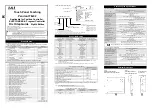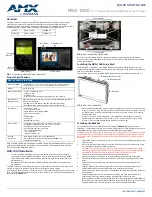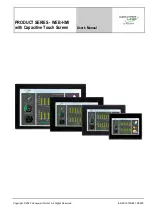
Square TMD
http://www.zennio.com
Technical Support:
http://zennioenglish.zendesk.com
23
In case of selecting “Every Button Pair is Configured Separately”, there will be a
specific parameter in every two-button control for specifically selecting the desired
behaviour.
2.3.2
DISABLED
While a button stays disabled, it will not be functional: touching on it will not cause the
execution of actions, nor will make the associated LED light.
ETS PARAMETERISATION
This function has no related parameters.
2.3.3
PAIR
Buttons configured to work as a joint control can be assigned the following functions:
Switch
: pressing one of the two buttons will make Square TMD send a binary
value to the bus, while pressing on the other will make it send the inverse
binary value. It is possible to configure which one does what.
Under a “
state-dependent
” LED illumination (see ANNEX I: LED Illumination
Modes), the LED of the corresponding button will remain on/off according to
the current state (on/off) of the switch. On the other hand, under a “
state-
dependent (both LEDs)
” LED illumination, both of them will remain on while
the switch is in the “on” state, and off while in the “off” state.
Two Objects (Short Press / Long Press)
: permits sending specific binary
values both after a short or a long press on any of the two buttons (i.e., they
will work as a joint control; for independent buttons, please configure them as
individual). Different objects will be used for the short and long presses.
Moreover, it is possible (in parameters) to make the “
state-dependent
” and
“
state-dependent (both LEDs)
” LED illumination modes (see ANNEX I: LED
Illumination Modes) depend on either one object or the other. However, if
“
LED Illumination Control (All Buttons)
” (section 2.3.1) has been set to
“state-dependent (where available)” only the short press object will be
considered
Dimmer
: short-pressing one of the two buttons will make Square TMD send a
switch-on order to the bus, while doing so on the other button will make it
















































